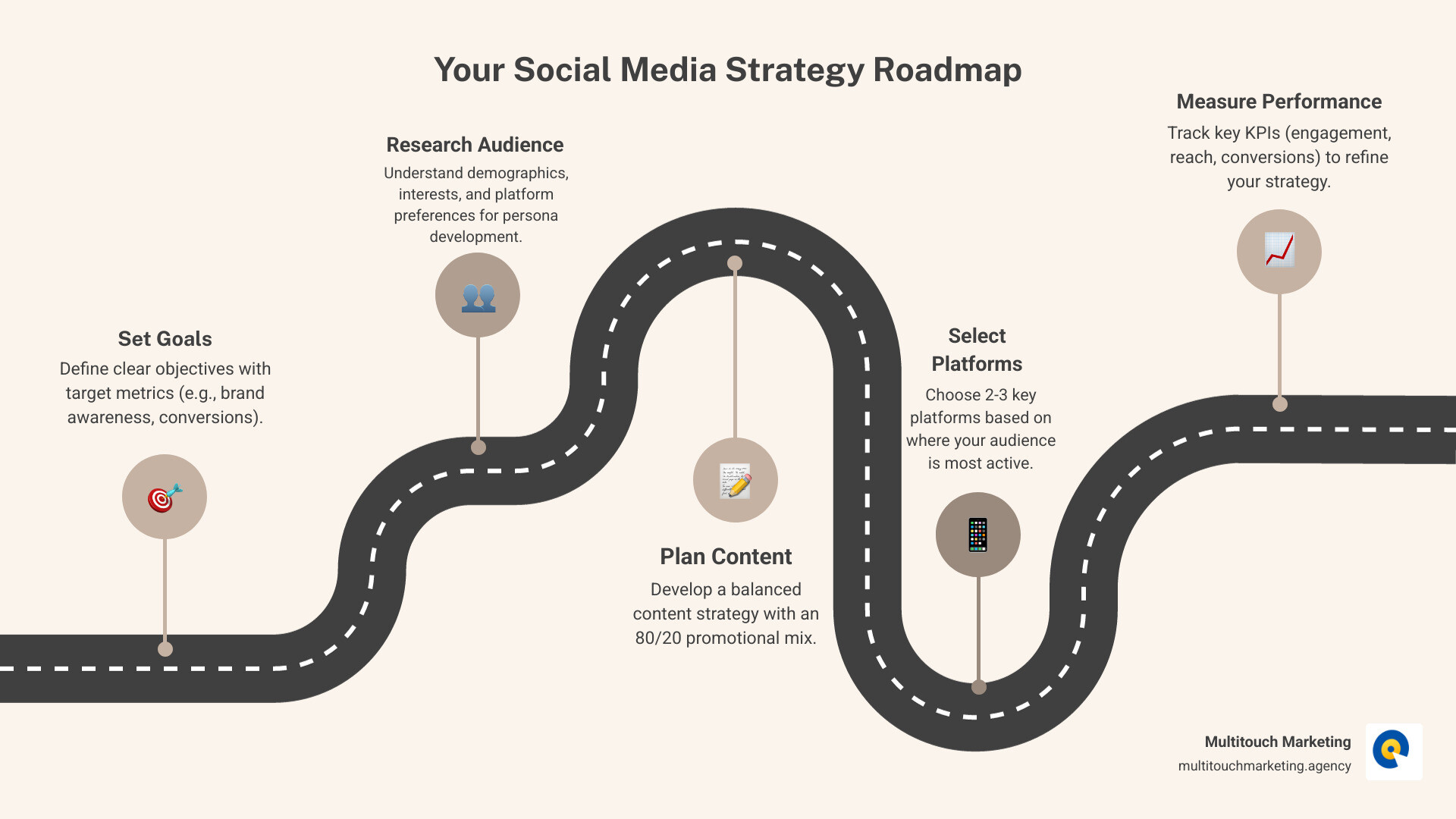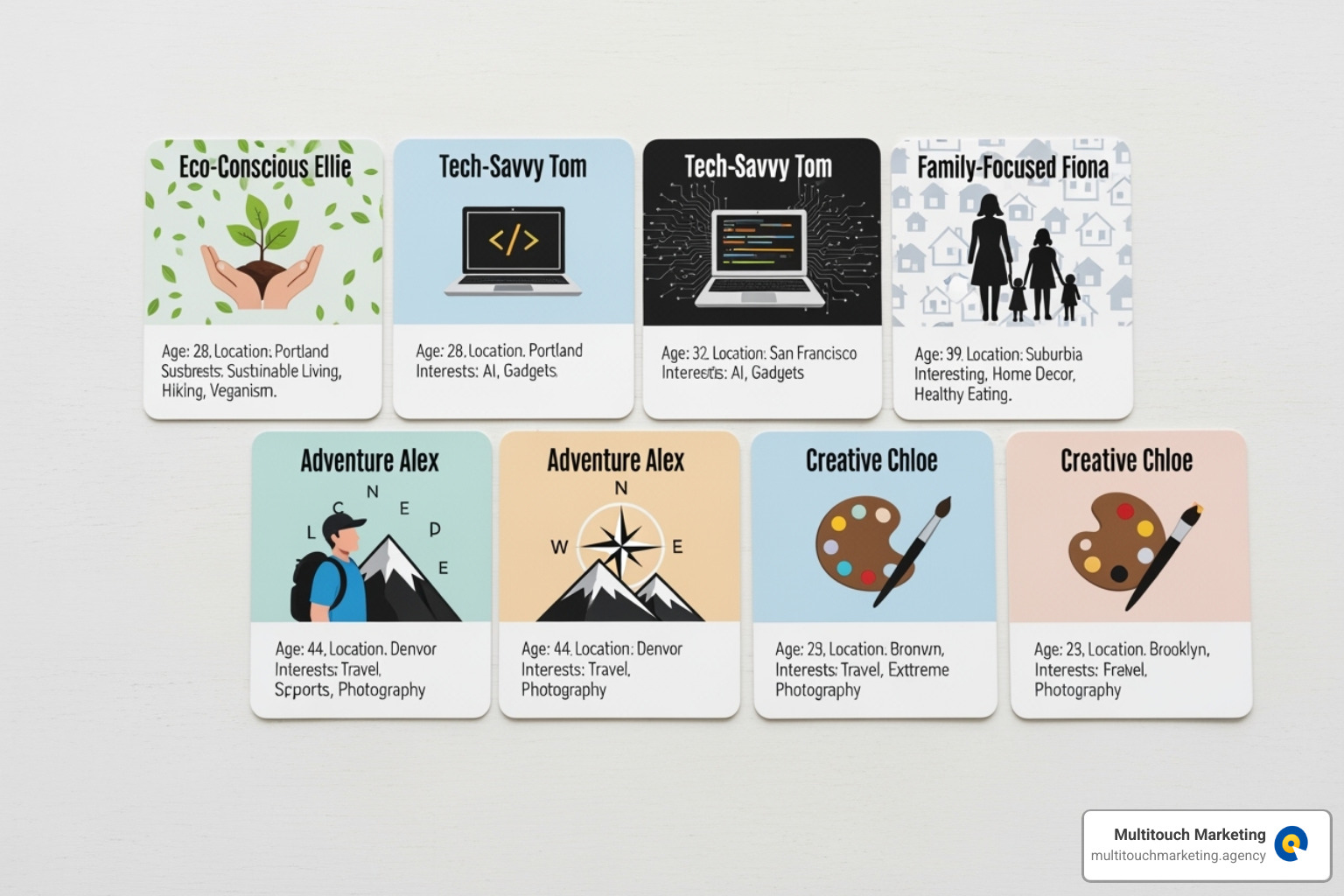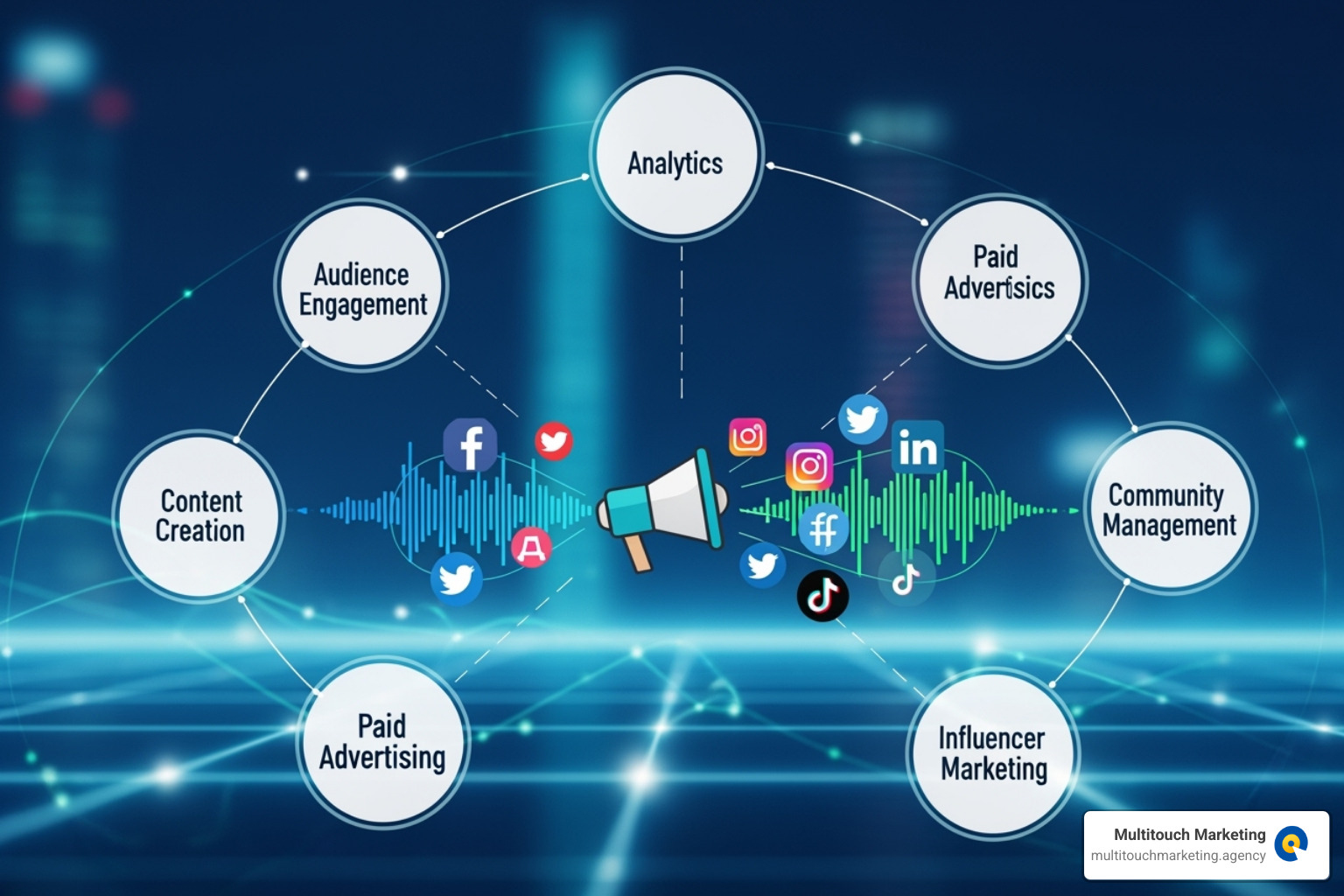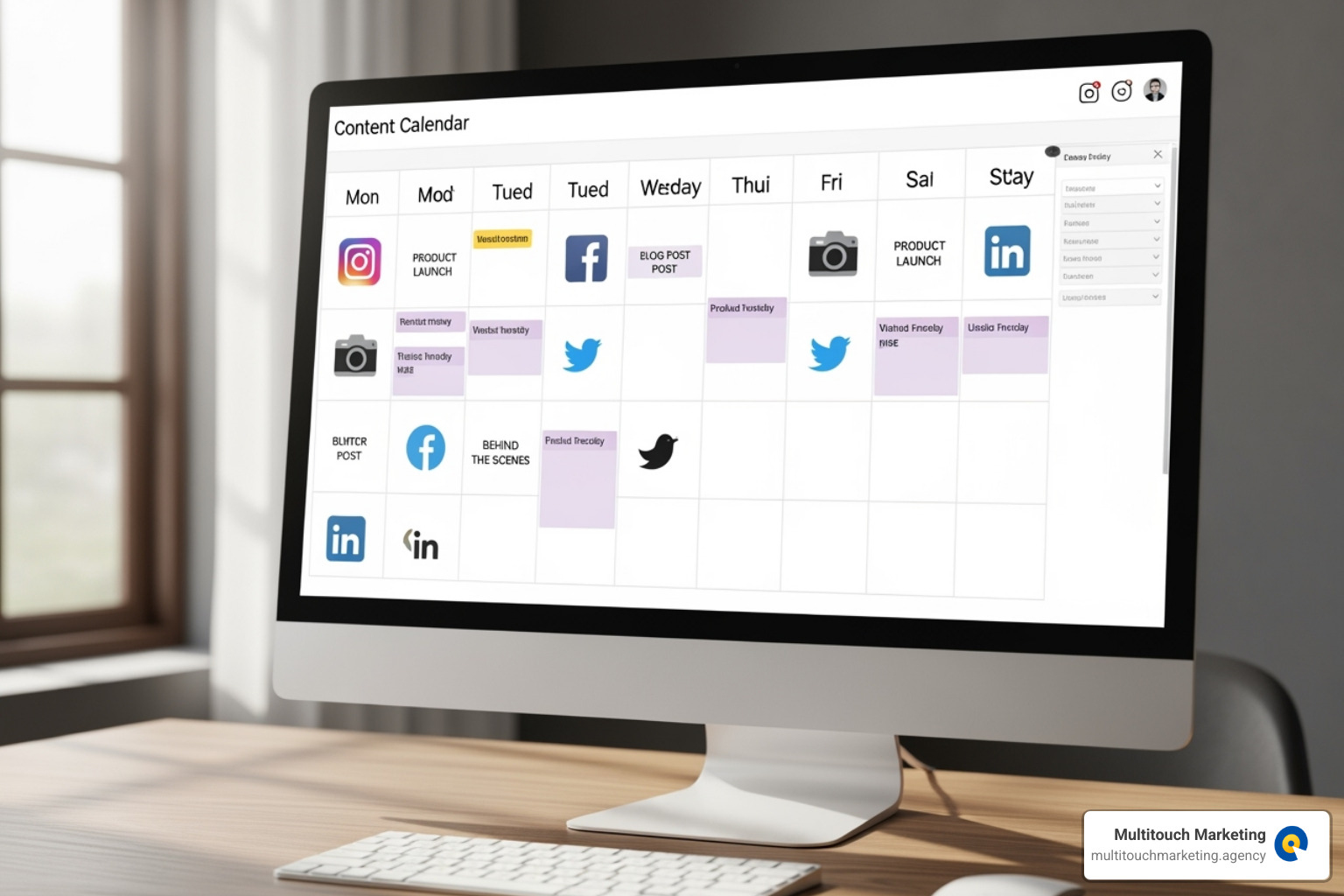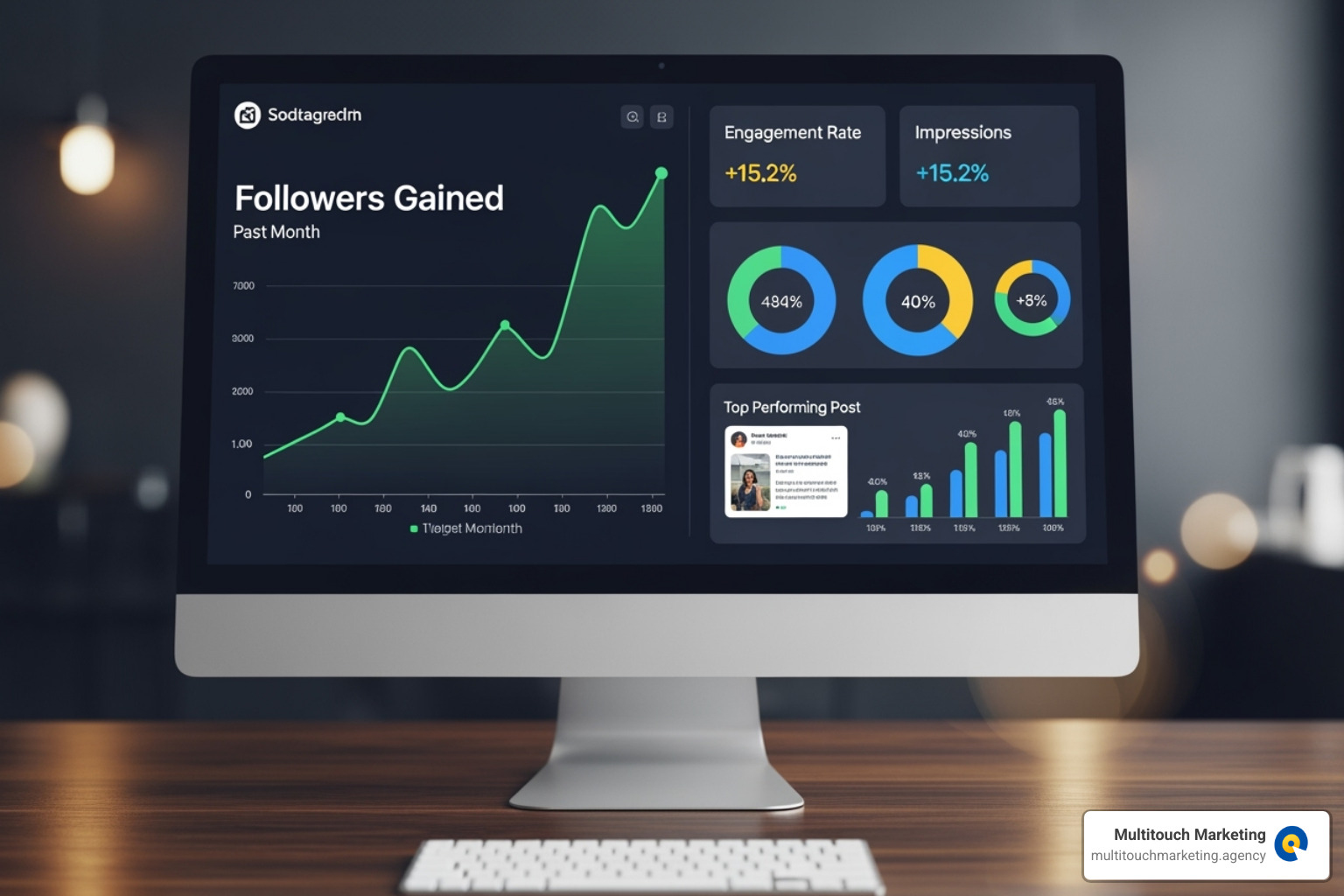Why Every Small Business Needs a Strategic Blueprint for Social Media Success
A social media strategy is a detailed plan outlining how your business will use social platforms to achieve its marketing objectives. An effective strategy includes clear goals, a defined target audience, a content plan, platform selection, and performance metrics to track ROI.
Without a strategic approach, you’re posting content and hoping for the best. Research shows that while 79% of marketers prioritize brand awareness, 69% focus on conversion-driving metrics like click-through rates. Most small businesses, however, jump in without a plan and see poor results.
A solid strategy transforms chaotic posting into purposeful engagement that drives real business outcomes. Think of it as the blueprint for a house; it guides every post, campaign, and interaction toward your goals, turning social media confusion into measurable success.
I’m Milton Brown, and since 2008, I’ve helped businesses from startups to enterprise clients develop winning social media strategy frameworks. My experience across healthcare, e-commerce, and higher education has shown me how the right strategic approach can transform a business’s online presence and drive measurable results.
Laying the Foundation: Goals, Audience, and Competitors
Building a social media strategy is like constructing a house: you need a solid foundation. Before creating content, we must establish three pillars: clear goals, deep audience understanding, and competitive intelligence. This foundational work turns random posting into purposeful engagement that drives business results.
How to Define Clear and Measurable Goals
“Getting more likes” isn’t a business goal. Use SMART goals (Specific, Measurable, Attainable, Relevant, Time-bound) to create objectives that move the needle. For example, instead of “grow our audience,” aim to “increase Instagram followers in our target demographic by 25% by Q4.” Your goals should align with broader business objectives, like lead generation. While 79% of marketers prioritize brand awareness, successful marketers track conversion-focused metrics. In fact, 69% track conversion rates and click-throughs because they directly impact ROI. Balance vanity metrics with business impact to connect awareness with revenue growth.
Understanding Your Target Audience for a Winning Strategy
Your audience isn’t “everyone.” The more specific you are, the more powerful your social media strategy becomes. Social media has become a primary search channel for many, with 46% of Gen Z preferring it over traditional search engines. This means your content must be findable where your audience is looking.
Go beyond basic demographics to understand psychographics: their values, motivations, and pain points. Analyze their social media habits to see which platforms they prefer and when they’re active. Generational differences are key: Gen Z favors TikTok and Instagram, while Boomers are more engaged on Facebook. Create detailed buyer personas to speak directly to each segment. Social listening is also essential; one-third of brands use it to track conversations and identify trends, refining their messaging in real-time.
For deeper insights, check our guide on Social Media Audience Insights.
How Competitor Analysis Informs Your Plan
Ignoring your competition is a mistake. Smart competitor analysis helps you find market gaps and position your brand uniquely. Start by identifying key competitors and analyzing their social presence. What content resonates with their audience? What are their strengths and weaknesses? Maybe a competitor dominates Facebook but has a weak Instagram presence—that’s your opening. The goal isn’t to copy them but to uncover opportunities where your brand can shine. Use their successes and failures to refine your own social media strategy.
For guidance on analysis techniques, explore our resources on Social Media Competitor Analysis and Best Social Media Analytics Tools for Competitor Analysis.
Building Your Presence: Profile Optimization and Content Pillars
With your foundation set, it’s time to build a presence that represents your brand. This phase is about creating a cohesive brand experience that encourages engagement and turns followers into customers. Here, your social media strategy comes alive, changing digital profiles into relationship-building opportunities.
Best Practices for Auditing and Optimizing Social Profiles
Your social profiles are your digital first impression. A social media audit is the first step. Ensure you have:
- Consistent profile photos: Use a high-resolution logo or professional headshot across all platforms for brand recognition.
- Compelling bios: Clearly state who you are and the value you offer. Use location-specific keywords (e.g., Raleigh NC, Durham NC) for local findability.
- Social SEO: Use strategic keywords in your bio, posts, and handle to help the right people find you.
- Up-to-date contact info: Keep your website links, hours, and contact details accurate.
- A clear link in bio strategy: Direct traffic to your most important priority, like a new service or promotion.
Verification badges add instant credibility. Pursue them if you qualify, as 78% of consumers say a brand’s social media presence impacts their trust.
Creating a Balanced Content Mix
Avoid treating social media like a constant commercial. A successful social media strategy requires a balanced content mix that provides value. We organize content around four pillars:
- Educational: Share tips, how-to guides, and industry news to establish expertise.
- Entertainment: Use humor and relatable stories to humanize your brand.
- Promotional: Talk about your products, services, and offers with clear calls to action.
- Inspirational: Share success stories, behind-the-scenes content, or motivational posts that reflect your brand values.
Follow the 80/20 rule: 80% of your content should inform, educate, or entertain, while only 20% directly promotes your brand. This is crucial, as 34% of marketers find overly promotional content a major turn-off. Also, prioritize User-Generated Content (UGC). Content from real customers builds authenticity, which 53% of consumers rank as a top brand content trait. The right mix depends on your audience, but variety and brand voice are key.
For tips on creating visuals that convert, see our guide on Social Media Ad Creative.
Execution and Engagement: Your Actionable Social Media Strategy
Now it’s time to put your social media strategy into action. This is where planning transforms into conversations, connections, and measurable results. This active, strategic approach is precisely Why Social Media Marketing is Necessary for modern businesses.
The Role of a Content Calendar in Your Social Media Strategy
A content calendar is your secret weapon for executing your strategy with confidence. It prevents last-minute scrambling and keeps you in control. Key benefits include:
- Planning and organization: Get a bird’s-eye view of your content, aligning posts with campaigns and events.
- Maintaining consistency: Regular posting builds a loyal community and satisfies platform algorithms.
- Scheduling for optimal times: Reach your audience when they are most active and engaged.
- Batching content creation: Dedicate focused time blocks to content creation for improved productivity and creativity.
- Visualizing your strategy: Easily ensure you’re maintaining a balanced content mix.
Whether it’s a spreadsheet or a scheduling platform, choose a system you’ll use consistently. For help setting up your calendar, explore our guide on Social Media Content Calendars.
Optimizing Content for Engagement and Reach
Creating content that connects is key to standing out. With billions of posts daily, your content must resonate.
- Compelling captions: Tell stories, ask questions, and spark emotion to make people stop and engage.
- Relevant hashtags: Use a mix of branded, industry, trending, and niche hashtags to help the right people find your content.
- Interactive content: Use polls, quizzes, and Q&As to boost engagement and gain audience insights.
- Short-form video: This format is essential, as it’s 2.5 times more engaging than long-form videos.
- Call-to-actions (CTAs): Guide your audience on what to do next, whether it’s to comment, share, or visit your site.
We’re competing for attention among over 4.6 billion active social media users worldwide. The brands that win are those that consistently create content worth engaging with.
Integrating Customer Service and Influencer Marketing
Social media is a vital customer touchpoint. Customer service on social is now an expectation, with 53% of brands including it in their social strategy. Respond quickly to comments and DMs to build brand trust—78% of consumers agree a brand’s social presence impacts their trust.
Influencer marketing is also highly effective. 90% of marketers report that sponsored influencer content performs better than their own organic posts. Authenticity is key; 49% of consumers make purchases based on influencer posts, and 53% look for authenticity, making micro-influencers a powerful choice.
Don’t overlook employee advocacy. These programs can generate 8x higher engagement rates than brand-posted content. Weaving these elements into your social media strategy creates a more dynamic and trustworthy brand presence.
Measuring and Refining: Data-Driven Strategy for Long-Term Growth
Measuring and refining your social media strategy is like using a GPS for your marketing. Without data, you’re driving blind. This continuous cycle of measuring, learning, and adjusting separates successful brands from the rest. Digital marketing is measurable, and we can use Social Media Marketing Analytics Tools to turn numbers into actionable insights.
Key Metrics to Track for Success
Focus on metrics that demonstrate real business results, not just vanity numbers. Here are the essentials:
- Reach and impressions: The number of unique people who saw your content and the total number of views. Crucial for brand awareness.
- Engagement rate: Shows if your content is resonating through likes, comments, shares, and saves.
- Click-through rate (CTR): The percentage of people who clicked a link to your website, bridging social media with business goals.
- Conversion rate: The percentage of users who took a desired action (e.g., purchase, sign-up). This directly ties social efforts to outcomes. Learn more with our guide on Social Media Conversion Tracking.
- Follower growth: Consistent, organic growth indicates increasing brand appeal.
- Cost per lead (CPL): For paid campaigns, this shows your investment per potential customer, offering clear ROI insight.
Leveraging Data to Refine Your Strategy
Your social media strategy should be a living document that adapts to audience behavior. Regular performance reviews (monthly or quarterly) are non-negotiable for spotting trends and areas for improvement. Identify top-performing content and dissect it to understand what made it successful—the format, topic, or timing. Use these patterns to create more of what your audience loves.
Analytics also reveal audience behavior, such as their most active times and preferred content formats. Use this intelligence to adjust tactics based on data. If video outperforms images, pivot your strategy. This agility is key. The process of iterating for better results never stops; constantly A/B test headlines, CTAs, and visuals to maximize performance. With 61% of organizations now relying on AI-powered insights to analyze data, we can spot patterns faster than ever. For more, explore Advanced Social Media Analytics. Data without action is just trivia; use it to continuously improve.
The Future of Social Strategy: Trends, Tech, and Teamwork
The social media strategy landscape is always evolving. What works today may be outdated tomorrow. The businesses that thrive are those that adapt to change, leverage new technologies, and foster team collaboration while staying true to their core values.
The Role of AI and Automation
Artificial intelligence is already here, making social media management easier. Use it as a powerful assistant, not a replacement for human connection.
- AI for content creation: Brainstorm ideas, draft captions, and create simple graphics to turn your creative spark into polished content faster.
- AI for analytics: 61% of organizations use AI to quickly spot patterns, predict optimal posting times, and gauge brand sentiment.
- Automation tools: Use scheduling tools to post at optimal times and chatbots to handle routine customer service inquiries, freeing up your team for more complex issues.
These technologies streamline workflows, handling repetitive tasks so you can focus on strategy, creativity, and building genuine relationships.
Ensuring Buy-In and Collaboration
A brilliant social media strategy needs support from leadership and collaboration across departments. Social media impacts sales, customer service, and HR.
- Demonstrate ROI to leadership: Show how social efforts contribute to leads, sales, and customer retention using clear reports that connect activities to business outcomes.
- Share social data with other departments: Insights can help the sales team understand prospects and the product team gather feedback. 60% of organizations use social data daily.
- Launch employee advocacy programs: Posts shared by employees get 8x higher engagement and can reach 20x more people than brand content. When your team members become brand ambassadors, it creates a powerful competitive advantage.
The future of social media success lies in building an adaptable foundation with human connection at its heart. Technology amplifies our efforts, but authentic relationships drive results.
Frequently Asked Questions about Social Media Strategy
Navigating social media can be overwhelming. Here are answers to some of the most common questions we hear from business owners about social media strategy.
How often should I post on social media?
There’s no single magic number. Consistency is more important than frequency. It’s better to post three high-quality pieces of content weekly than seven forgettable ones. Best practices vary by platform (e.g., Instagram 3-5 times/week, Facebook 1-2 times/day), but the real key is to understand your audience’s engagement patterns through your analytics. Post when they are most active. A content calendar helps maintain consistency without the daily scramble. Always prioritize quality over quantity.
How long does it take to see results from a social media strategy?
Social media is not an overnight success. Think of it like planting a garden; it takes time to grow. The timeline varies by your goal, industry, and budget. Brand awareness goals may show results in a few weeks, while lead generation takes longer. In our experience, you can expect to see meaningful, measurable results within 3 to 6 months of consistent effort. This period provides enough data to understand what’s working and optimize your approach. Sticking with your strategy and continuously improving is crucial.
What’s the difference between a social media strategy and a social media campaign?
These terms are often confused. Your social media strategy is the long-term blueprint that guides all your social media activities. It defines your overall goals, target audience, brand voice, and measurement plan. It’s the “why” and “what” of your social presence.
A social media campaign is a short-term, targeted effort with a clear beginning and end, designed to achieve a specific objective within your broader strategy. Examples include product launches, holiday promotions, or contests. Think of your strategy as the house’s foundation and framework, while campaigns are the individual rooms built within it. They work together: strategy provides direction, and campaigns bring specific initiatives to life.
Conclusion
We’ve journeyed from setting SMART goals to leveraging AI, breaking down the process of crafting a killer social media strategy. Success isn’t about posting more; it’s about posting smarter. Your social media strategy is a living document that should evolve with your business and audience.
The magic happens when you combine consistency with creativity. Your audience craves authentic connections and the human side of your brand. A data-driven approach ensures your message reaches the right people at the right time, building bridges to your ideal customers.
At Multitouch Marketing, we’ve seen how the right social media strategy transforms businesses in Raleigh NC, Durham NC, Chapel Hill NC, and beyond. We’re passionate about helping you tell your unique story in a way that drives measurable results.
Ready to stop guessing and start growing? It’s time to turn your social media into a powerful business tool. Transform your online presence with a strategic approach to Social Media Marketing and watch your business thrive.

